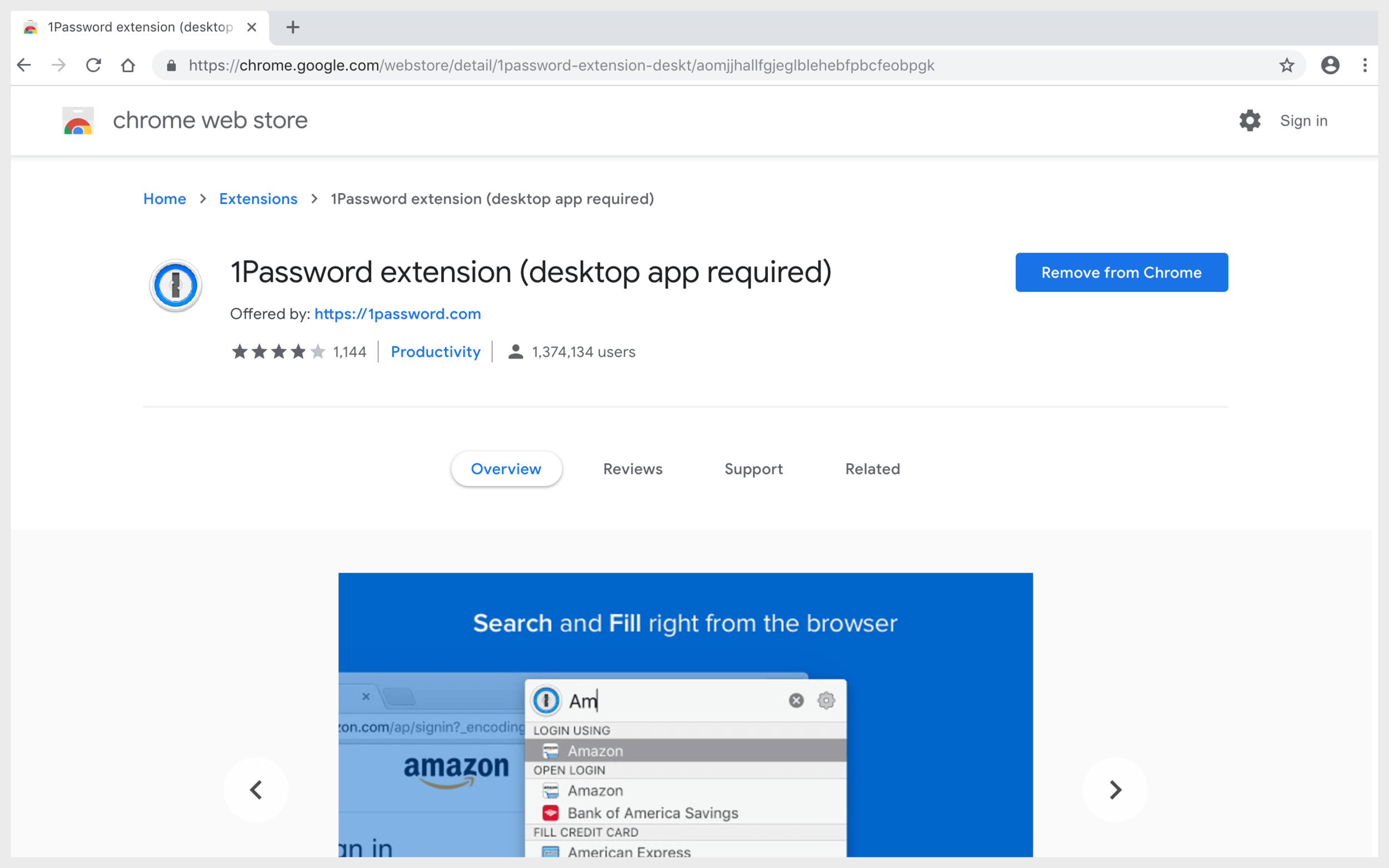Google Chrome to Warn Users If Passwords Are Compromised. Our top choice is 1Password, which came through our independent password manager tests as best in class. It's simple to use, secure. To protect you, 1Password will only fill when you tell it to. If you’re on the sign-in page for a website, click the 1Password icon in your browser’s toolbar, and select the Login item for that site to fill your username and password.
1Password is not installed in your browser.Install it now.Learn more.
Restart your browser
Before you go further, restart your browser. It’s a simple step and resolves most common issues.
After you restart your browser, open and unlock 1Password in your browser to see if the issue is resolved. If it is, you can stop here.
Update your browser and 1Password
To see if the issue has already been fixed in an update, update your browser and 1Password.
Restart your computer
If you’re still having trouble, restart your computer. Then open and unlock 1Password in your browser to see if the issue is resolved.
If you don’t see the 1Password icon in your browser’s toolbar
1password X Chrome Extension
Learn what to do if you don’t see the 1Password icon in your browser’s toolbar.

If 1Password isn’t saving or filling passwords on any website or you don’t see the 1Password icon in form fields
If you don’t see the 1Password icon in form fields when you visit websites, make sure it’s turned on. Follow the steps for your browser:
Safari
- Open and unlock 1Password.
- Choose 1Password > Preferences.
- Click the Browsers icon, then turn on:
- “Always keep 1Password Extension Helper running”
- “Show inline menu in Safari”
- “Detect new usernames and passwords and offer to save them”
Chrome, Firefox, Edge, and Brave
- Click in your browser’s toolbar.
- Click and choose Settings.
- Turn on “Offer to fill and save passwords”.
If you’re using Safari and still don’t see the 1Password icon in form fields, Control- or right-click the web page and choose “Show 1Password on this page”.
If you’re having trouble saving and filling logins on a specific website
If 1Password is working well on other sites, but you’re having trouble saving and filling passwords on a specific website, follow these steps:
- Check for multiple Login items. If you have more than one Login item for a single website, and some of them have the same password, you won’t be prompted to save the password again. You can still save it manually.
- Save the Login manually. When you save a new Login manually, 1Password will record the form fields on the page even if it doesn’t automatically detect them.
If you can’t sign in after changing your password on a website

If you used the password generator to create your new password, you can recover it in the Generator History. Learn how to recover an unsaved password.
If you still can’t sign in, use the website’s password reset feature. Then follow the steps to change the password.
If 1Password doesn’t automatically fill your information when you visit a website
To protect you, 1Password will only fill when you tell it to.
If you’re on the sign-in page for a website, click the 1Password icon in your browser’s toolbar, and select the Login item for that site to fill your username and password.
If you want 1Password to open the website and fill your password, click the 1Password icon in your browser’s toolbar, start typing to find the site you want to sign in to, then click Go.
Learn more about signing in using 1Password.
If 1Password takes you to the wrong page when you click a Login item
You might need to change the saved web address for that Login item:
- Open and unlock 1Password.
- Select the Login item and click Edit.
- Change the website field to the address of the sign-in page. (For example,
https://www.amazon.com/gp/sign-in.htmlfor Amazon.)
Get more help
If you tried the above steps and are still having trouble with 1Password in your browser, contact 1Password Support with a description of the problem.
Chrome Store 1password
A few of months ago I abandoned Fluid App for a shell script that generates Google Chrome site-specific browsers (SSBs). It has been amazing. I use a Chrome SSB for two Gmail accounts, Google Calendar, Remember the Milk, and TweetDeck.
1password Chrome Extension Download
There is a few quirks to be aware of however.
1password Google Chrome Extension Not Working
Ideally when you click an external link in an SSB it would open in your default browser. For example, if you were reading an email in your Gmail SSB and clicked http://nytimes.com it would open in your default browser (i.e. Firefox, Safari, Chrome, Opera, whatever). Unfortunately this is a known issue in Chrome and has yet to be addressed. At the moment, if you clicked that http://nytimes.com link in your Gmail SSB, it would just open a new Chrome window within the Gmail SSB. This was really annoying at first because I had to login to all my online accounts (Facebook, Twitter, etc) in all my SSBs, but once I realized that I could install 1Password in each SSB, the problem wasn’t so bad.
You can download and install the Chrome Extension for 1Password by going to the “Browsers” tab in 1Password’s Preferences.
Unfortunately, this only installs 1Password in your default Chrome browser, not in any of your SSBs.
To install the 1Password Chrome Extension in one of your SSBs:
One Password Google Chrome
- Open the SSB
- Press CMD-t to open a new window
- Enter http://aws.cachefly.net/aws/dmg/1PW3/English/OnePasswordChrome.crx in the address bar and hit enter
- The Chrome Extension should download and ask if you want to install
- Choose “Yes”
- A small key icon should appear in the top right corner of your Chrome window
1password Google Chrome Extension
Related Posts
